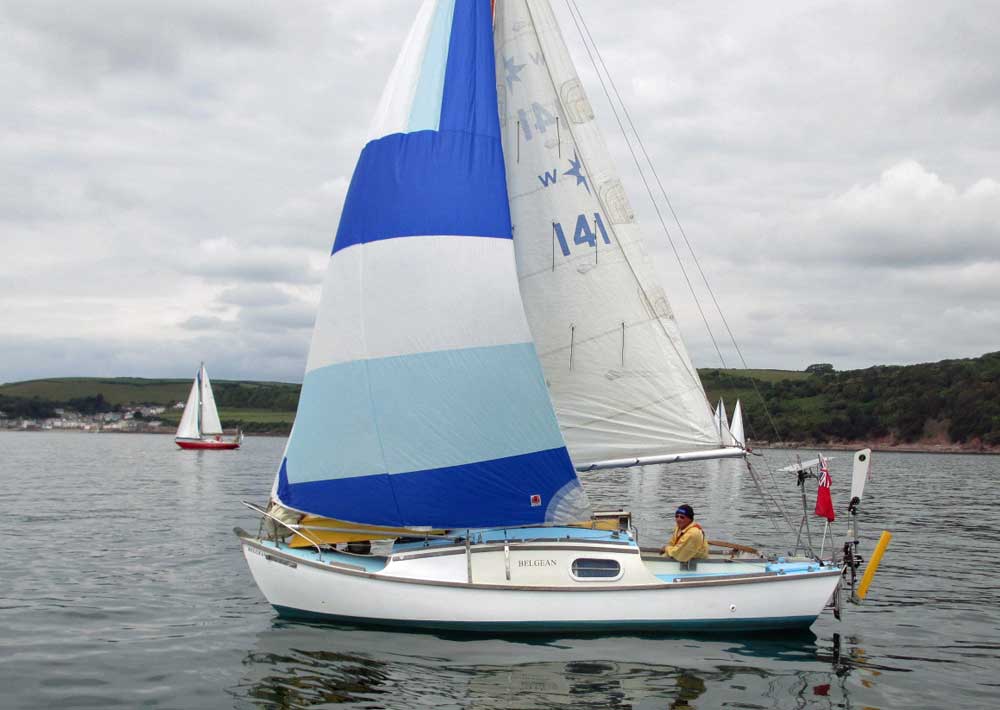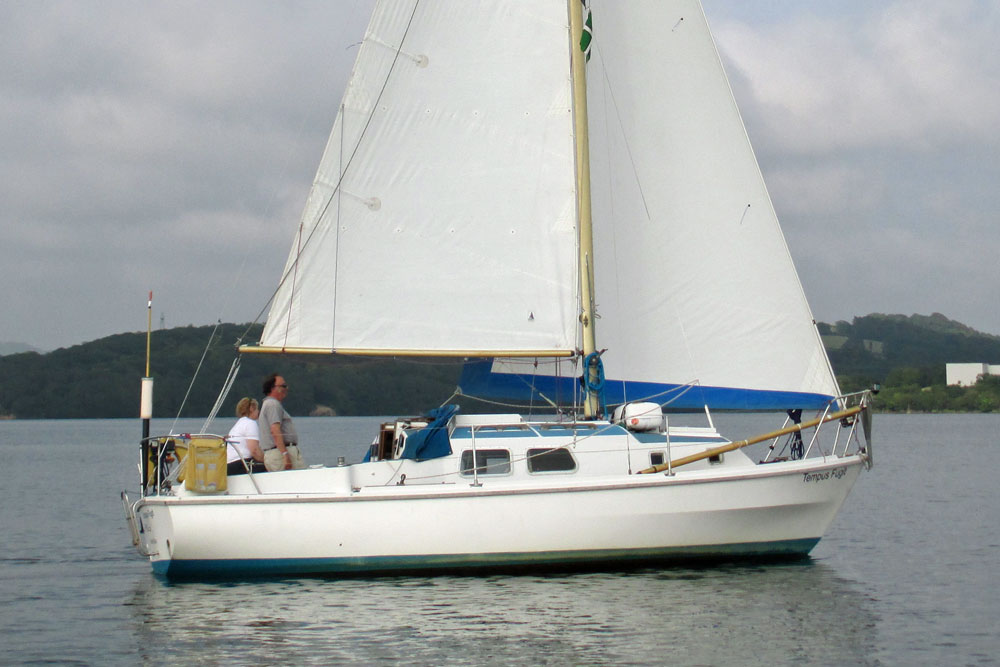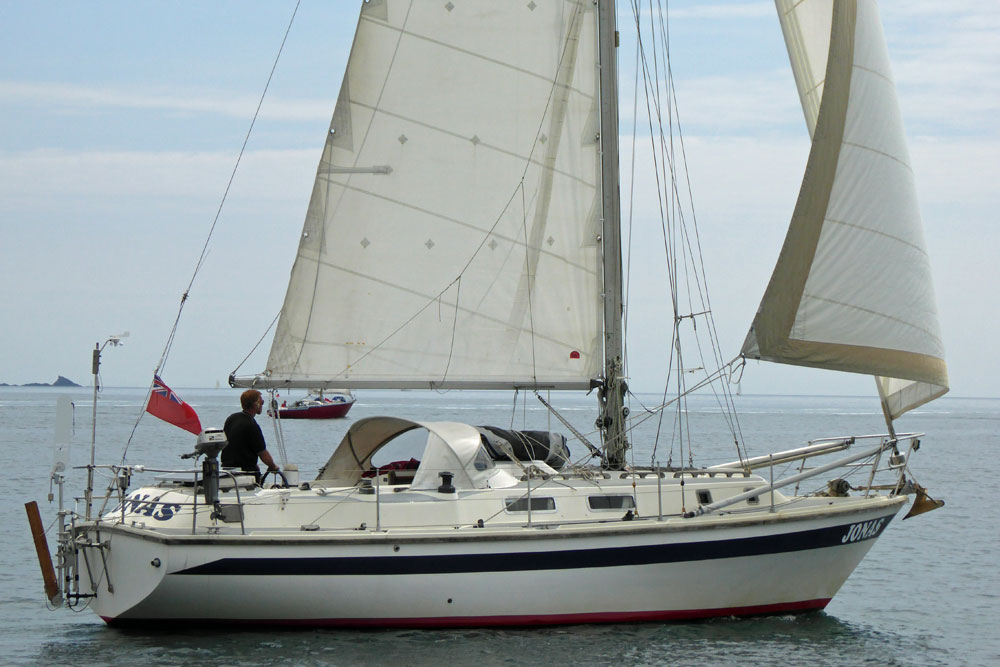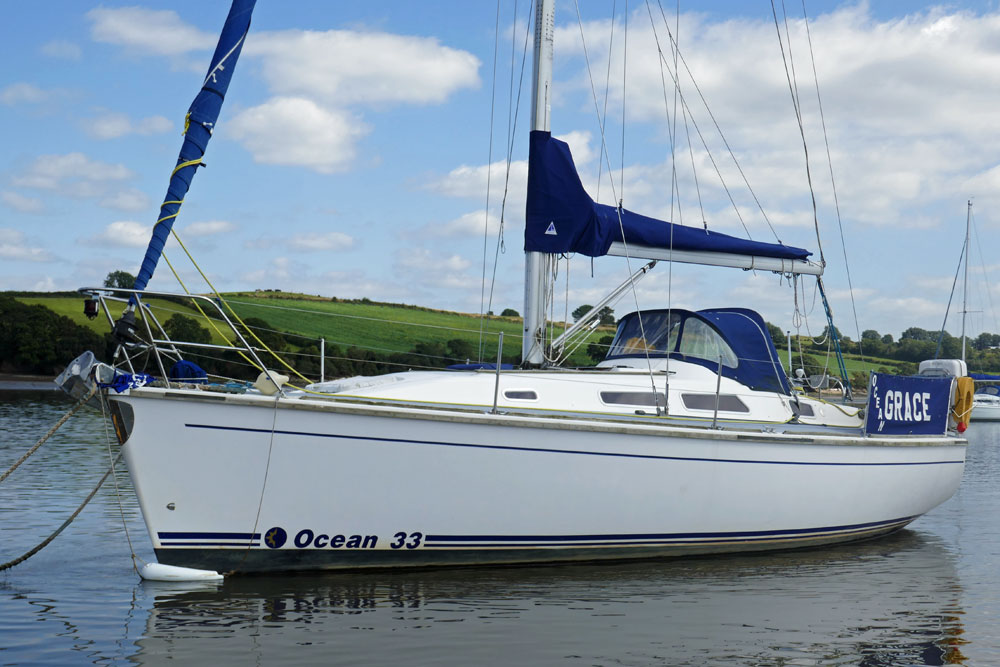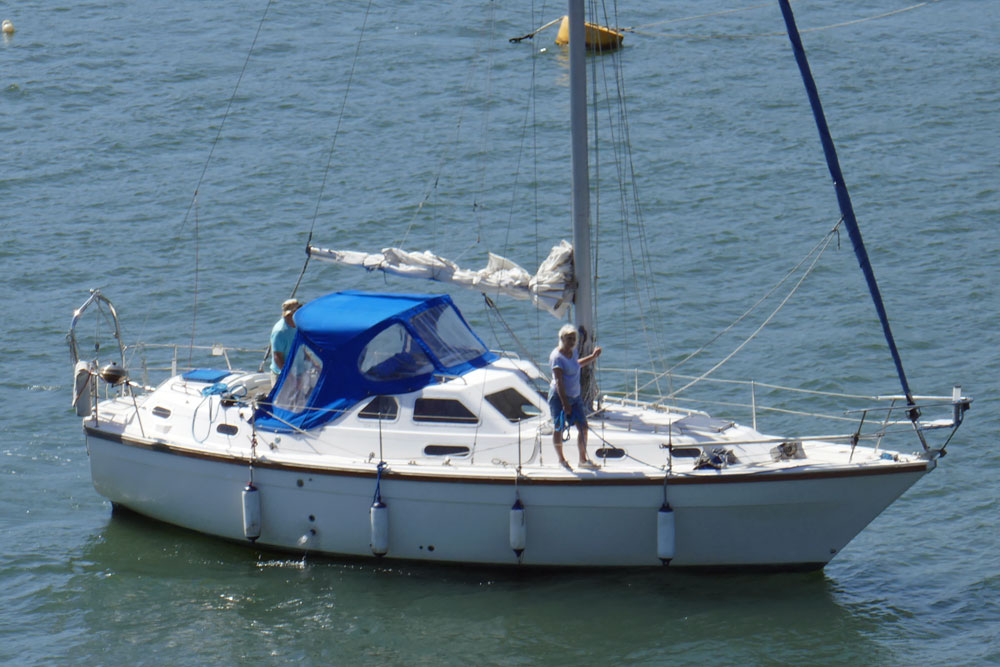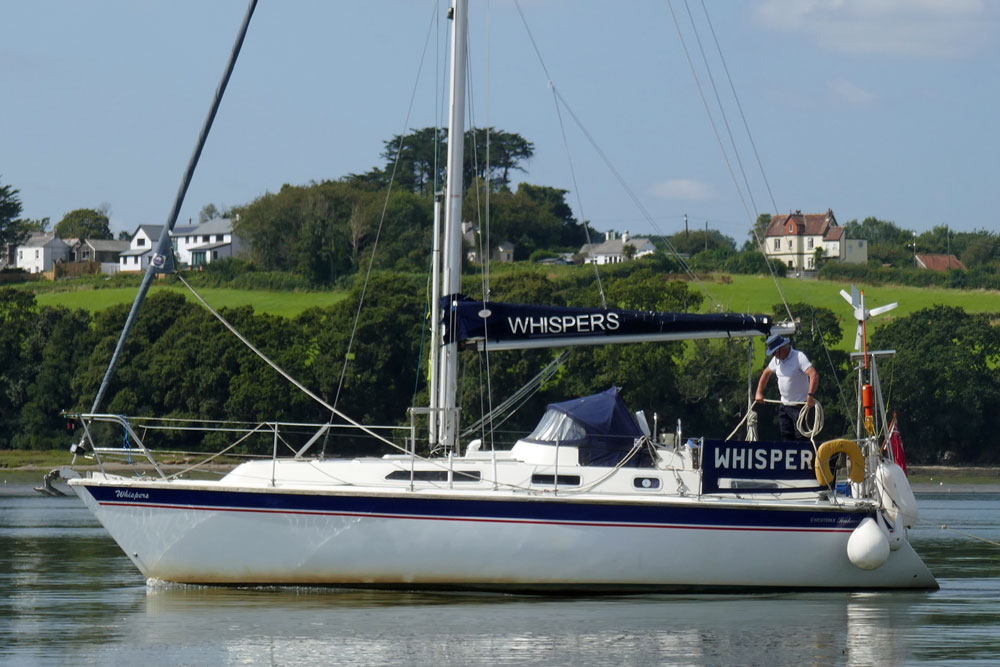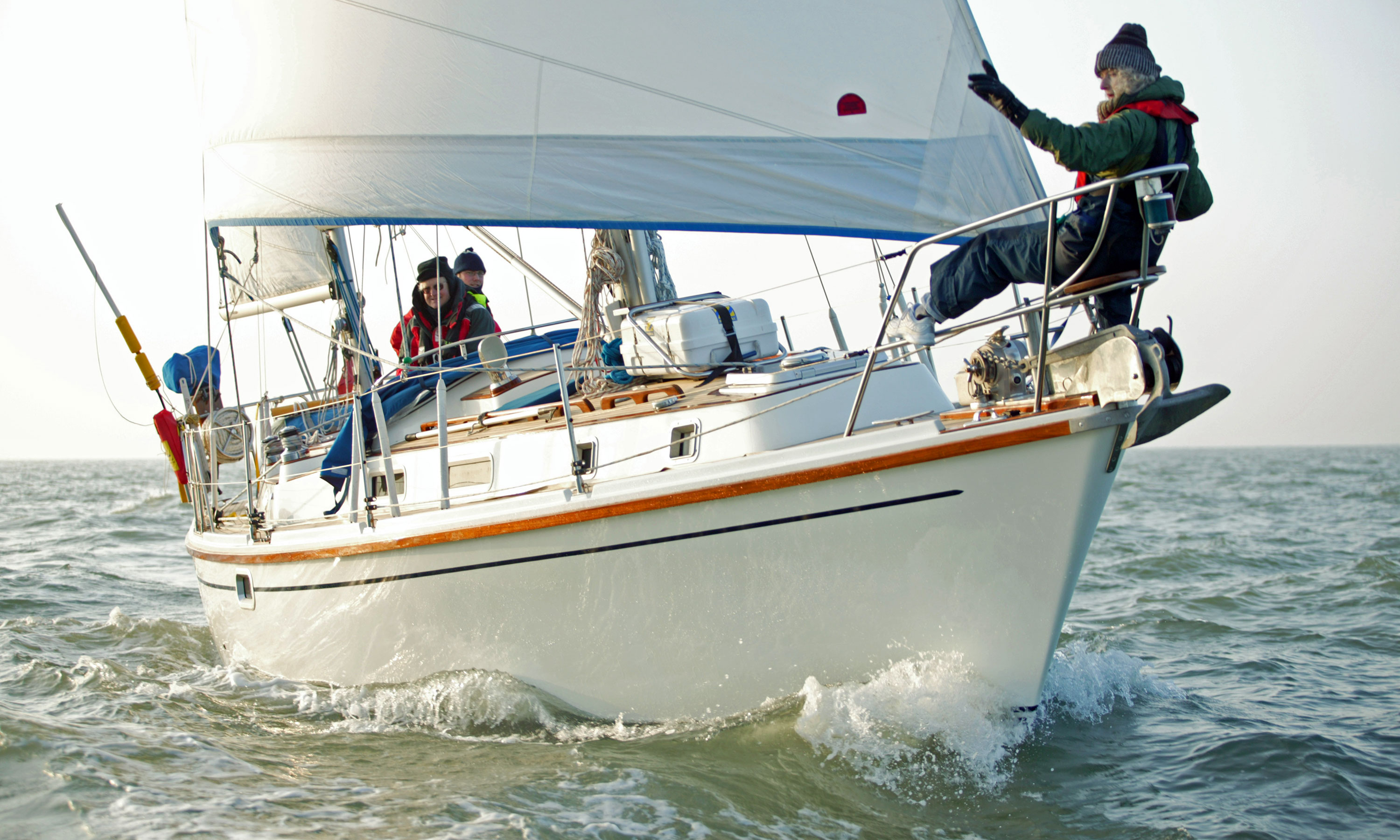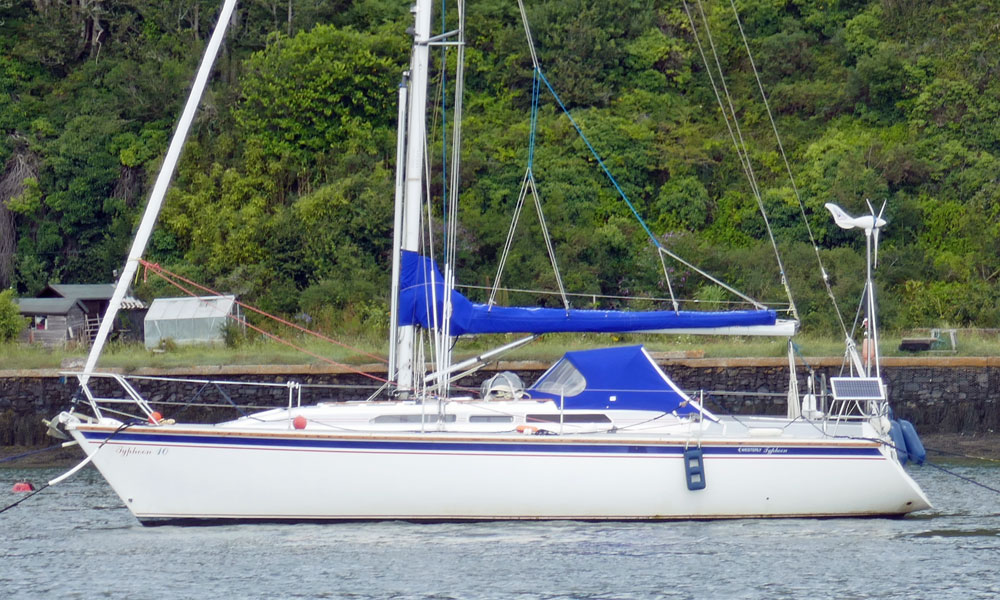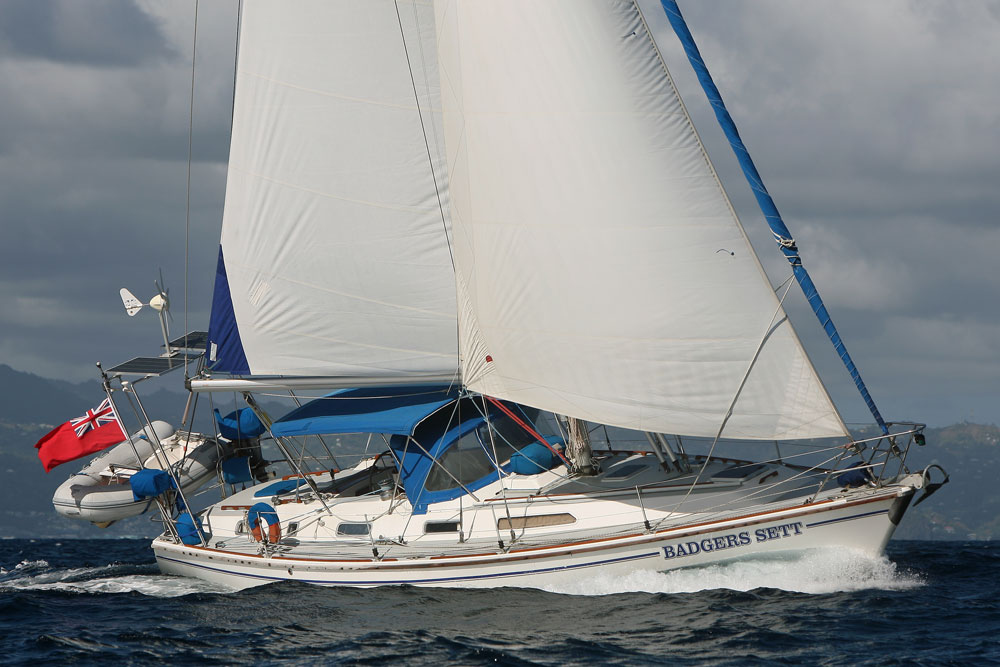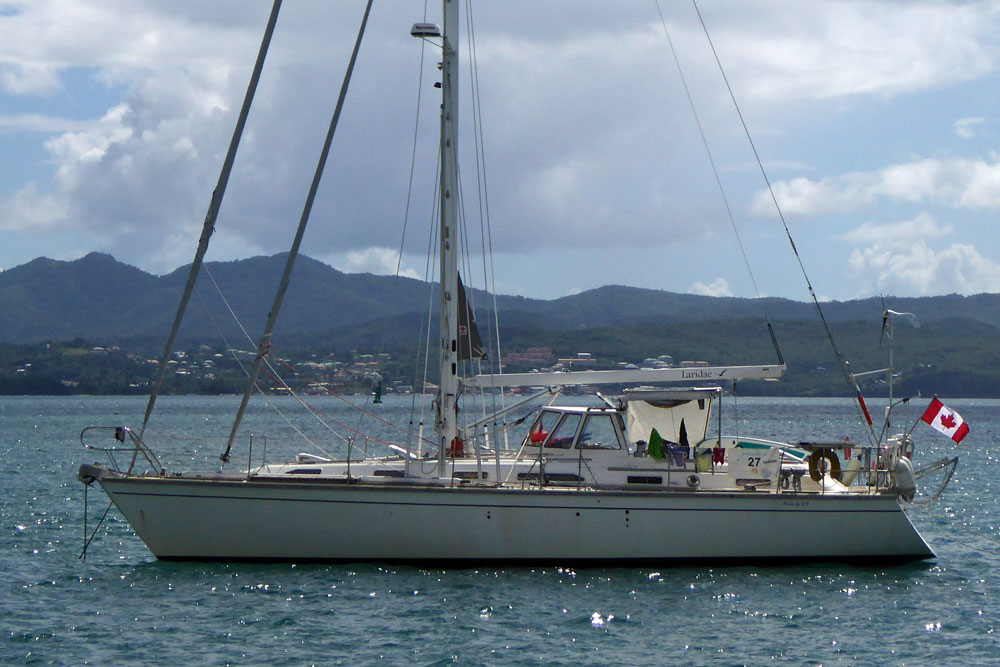- Home
- Cruiser Yachts under 30'
- Westerly 22
The Westerly 22 Sailboat
Specs & Key Performance Indicators
The Westerly 22, a masthead sloop, was designed by Denys Rayner and built in the UK by Westerly Marine Ltd.
Published Specification for the Westerly 22
Underwater Configuration: Bilge keel and skeg-hung rudder
Hull Material: GRP (fibreglass)
Length Overall: 22' 3" / 6.8m
Waterline Length: 18' 4" / 5.6m
Beam: 7' 6" / 2.3m
Draft: 2' 3" / 0.7m
Rig Type: Masthead Sloop
Displacement: 4,150lb / 1,429kg
Designer: Denys Rayner
Builder: Westerly Marine Ltd (UK)
Year First Built: 1963
Year Last Built: 1967
Number Built: 332
Owners Association: Westerly Owners Association
Published Design Ratios for the Westerly 22
1. Sail Area/Displacement Ratio: 17.0
2. Ballast/Displacement Ratio: 33.3
3. Displacement/Length Ratio: 228
4. Comfort Ratio: 17.0
5. Capsize Screening Formula: 2.1
Summary Analysis of the Design Ratios for the Westerly 22
1. A Sail Area/Displacement Ratio of 17.0 suggests that she'll approach her maximum hull speed readily and satisfy the sailing performance expectations of most cruising sailors.
2. A Ballast/Displacement Ratio of 33.3 means that a sailboat like the Westerly 22 (which doesn't have a stiffness-enhancing bulb keel), is likely to benefit from being reefed early to keep her sailing upright in a moderate breeze.
3. A Displacement/Length Ratio of 228, tells us she's a moderate displacement cruiser, which means she'll carry all your cruising gear without it having a dramatic effect on her performance. Most of today's sailboats intended for offshore cruising fall into this displacement category.
4. Ted Brewer's Comfort Ratio of 17.0 suggests that crew comfort in a seaway is similar to what you would associate with the motion of a lightweight racing boat. Upwind she'll slam enough to shake your fillings out with a motion that cruising sailors have no desire to get used to.
5. The Capsize Screening Formula (CSF) of 2.1 indicates that a Westerly 22 would not be the wisest choice of sailboat for ocean passage-making owing to the lower resistance to capsize in strong winds and heavy seas that is associated with sailboats with a CSF of 2.0 and above.
More about the Westerly 22
Accommodation
Four people can sleep comfortably on the Westerly 22, which has a cozy forecabin with a double "V"-shaped berth and a main cabin with two long couches that can be used as berths. The galley area is split between the two sides of the main cabin, with a stove and grill on the left and a sink on the right. A small desk for navigation is also on the left, above the stove. The toilet is hidden under the "V"-berth in the forecabin.
Sail Plan & Rigging
The Westerly 22 has a Gunter rig or an optional masthead sloop rig. The Gunter rig has a large roller-reefed mainsail and a jib, while the masthead sloop rig has a mainsail and a genoa. The sail area is 227 sq ft for both rigs. The Gunter rig is easier to set up and lower and can perform well in a good breeze.
Keel Options
The Westerly 22 has twin fixed keels made of iron. The draft of the boat is 2'3", which allows it to sail in shallow waters and be easily trailerable.
Sailing Performance
The Westerly 22 has a hull speed of 5.74 kn and a displacement-to-length ratio of 253, which indicates a moderate-performance cruiser. The boat is stable, seaworthy and capable of long-distance voyages. In 1965, the Gunter rigged Westerly 22 "Young Tiger" did an Atlantic crossing with three adults.
Average Cost
The average cost of a secondhand Westerly 22 sailboat depends on the condition, equipment and location of the boat. Based on some online listings, the price range can vary from £1,500 to £4,000.
Denys Rayner, the Designer
Denys Rayner founded Westerly Marine Construction Ltd., which became one of Britain's most successful yacht building companies.
Some of the other sailboats he designed are:
- Westcoaster 20: A wooden sailboat that was built by Beacon Boats Co Ltd starting in 1960;
- Westerly 30: A larger sailboat that was introduced in 1966;
- Westerly Windrush 25: A twin keel sailboat that was launched in 1966;
- Westerly 25: A similar sailboat to the Windrush 25 that was introduced in 1964;
- Westerly Nomad 22: A modified version of the Westerly 22 with a different coachroof and a larger cockpit;
- Westerly 30: A larger sailboat that was introduced in 1966;
- Westerly Windrush 25: A twin keel sailboat that was launched in 1966;
- Westerly 25: A similar sailboat to the Windrush 25 that was introduced in 1964.
Rayner was a pioneer of the 'bilge keel' type of small yachts, which could be beached easily and had better stability. He died in 1967, leaving behind a legacy of innovative and popular designs.
The above text was drafted by sailboat-cruising.com using GPT-4 (OpenAI’s large-scale language-generation model) as a research assistant to develop source material; we believe it to be accurate to the best of our knowledge.
Other sailboats in the Westerly range include:
Recent Articles
-
Ohlson 38 Guide: Specs, Performance Analysis & Cruising Review
Jan 07, 26 05:52 AM
Discover the Ohlson 38 sailboat. An in-depth look at its Einar Ohlson design, Tyler GRP construction, performance ratios, and why it remains a top choice for offshore sailors. -
Passoa 47 Sailboat Review: Comprehensive Specs & Performance Analysis
Jan 04, 26 04:57 AM
Discover the Passoa 47, a legendary aluminium blue water cruiser by Garcia. Explore technical specifications, design ratios, and why its lifting keel is a game-changer for offshore sailors. -
Sailboat Wheel Steering Maintenance & Inspection Checklist
Dec 30, 25 02:32 PM
Keep your vessel’s helm responsive and reliable with our expert maintenance checklist. Master cable tensioning and system inspections to avoid mid-passage failures.
